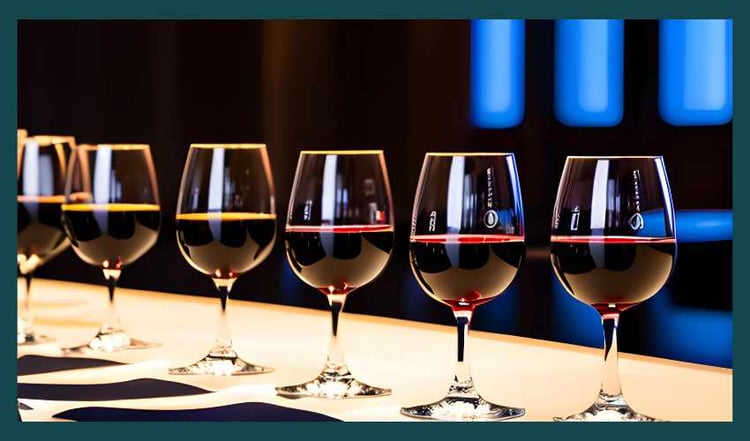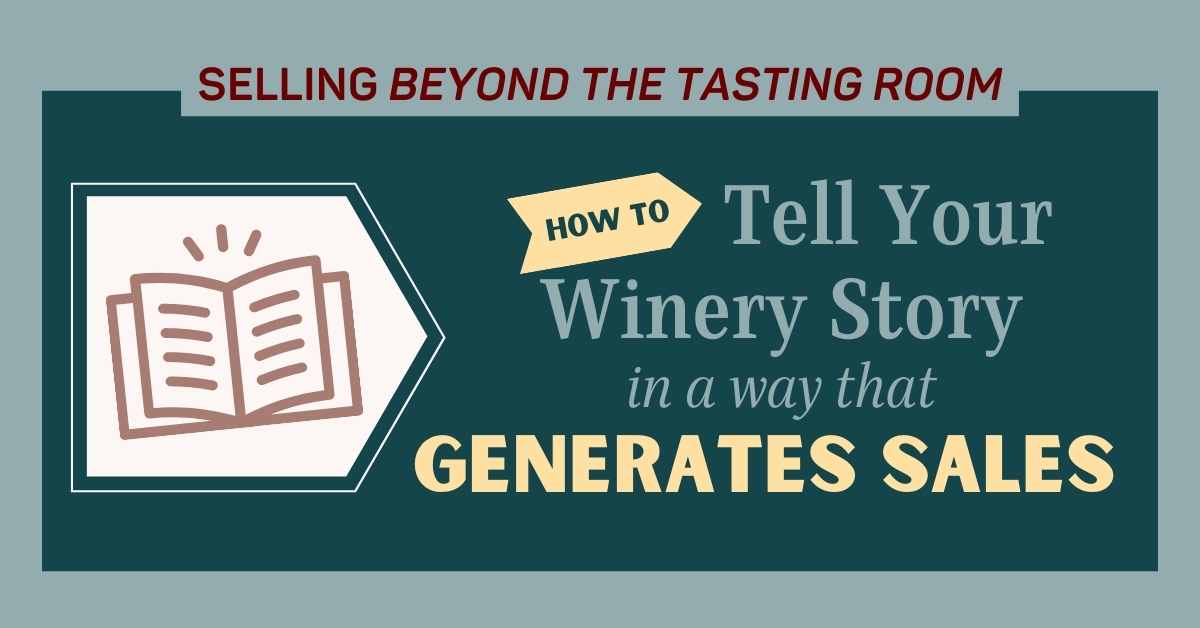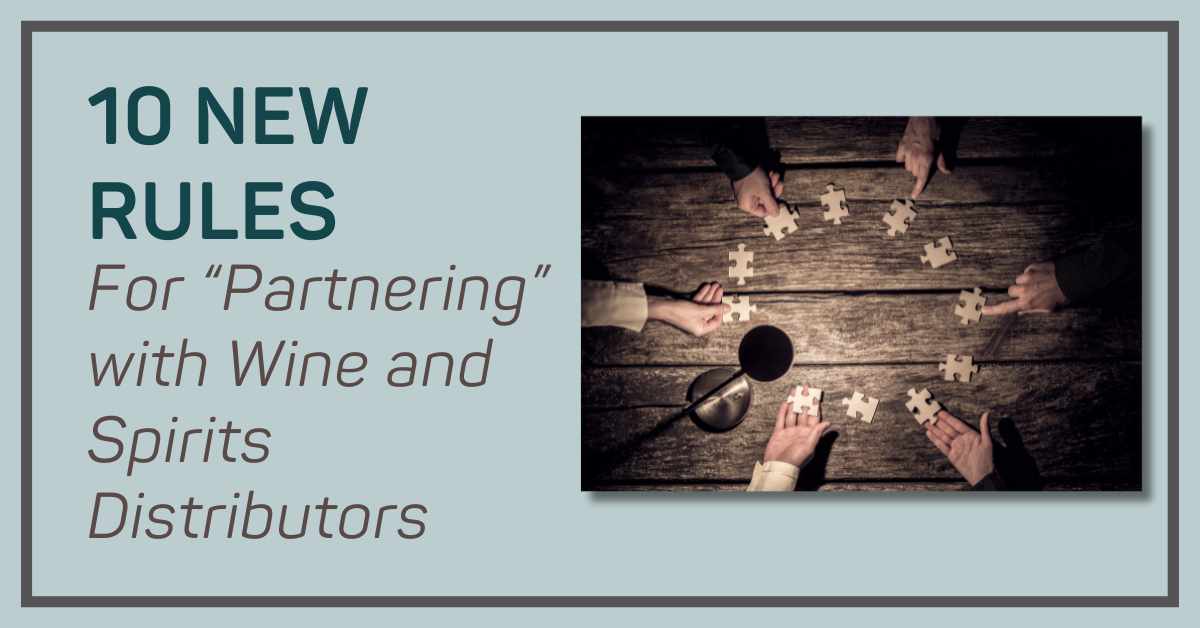5 Sales Mistakes to Avoid for Wineries and Distilleries (Video)
In this video, industry expert Ben Salisbury talks about the five biggest mistakes he has seen wineries and distilleries make when it comes to having...
When I first wrote about this topic several years ago, (How to Sell Wine Without Samples) I received lots of comments like, “Good luck with that” and “Samples have always been essential and will always be essential.”
But in the two years that have transpired since I wrote it, my case has only been strengthened because so many wine sales transitions now take place digitally.
As reported by Wine Business, Republic National Distributing Company’s eCommerce sales recently surpassed $1 billion. You cannot convince me this feat required thousands of samples pulled from their warehouses and stuffed into padded bags with Velcro closures in order to facilitate this level of sales volume. No way.
 Image generated with AI.
Image generated with AI.
Where do you think this is all going? I mean, do you think RNDC’s billion-dollar milestone is the high watermark? Of course not. Anyone with an IQ above room temperature knows digital transactions are only going to increase.
Any sommelier/wine buyer anywhere can jump online and “shop” for wine options completely unhindered by pesky distributor sales reps peddling whatever wines are on their priority lists.
Stop and consider how few unique and interesting wines ever make it in front of wine buyers due to the bottleneck created by the insane number of “must hit” numbers proffered by the larger suppliers.
An ever increasing number of wine buyers are forgoing the “traditional” process entirely in favor of a more “frictionless” buying process. The biggest innovation in wine sales (and spirits too of course) is HOW the buyer-seller transactions are taking place.
Selling without samples is a shift in mindset which is this: There is more at stake here than the features and benefits of the product itself. The need for wine knowledge is now surpassed by the requirement of strong business acumen.
Selling has become much more about bringing value to the business relationship which requires a fair amount of situational awareness. What are the buyers' pain points? What do they need from the wine producer community?
If wine sellers were to approach the transaction from a posture of “How can I help you most” instead of “Here’s what I need to sell,” the outcomes would be quite different.
Execution of this “modern” mindset requires sellers to slow down, accept that buyers' access to wine information is unlimited (including what’s in the seller's sample bag) and that the role of a seller is about facilitating and guiding buyers to solutions that ameliorate their challenges.
This partnership mindset I speak about above starts with empathy. Putting yourself in the role of the buyer and truly understanding what they want.
Here are some of the things on wine buyers wish lists:
These are just a few of the desires taking up space in wine buyers’ minds. Now please tell me how proffering a sample of the wine you need to sell adequately addresses one or more of these needs. It doesn’t!
The moment a seller takes their focus away from the product itself and empathizes with the customers needs, they have crossed over from “transactional” selling (features and benefits selling so popular in the 1950’s) into the “art” of selling which is about solving problems and truly partnering with their customers.
It is a shift in perspective. The way a product tastes certainly has some value. But it's critical that sellers don’t over emphasize the value that samples bring to the business relationship. Business acumen eats wine knowledge for breakfast!
If you really want to break free from sample dependency, you will have to shift your focus from what you want to what your customers want. The good news is when you do that, you’ll sell more wine than you ever thought possible.
Selling is not about persuasion, presentations, and overcoming objections. It’s about adding value to the business relationship. The sales should be merely a byproduct of a much larger relationship. One built upon service, dependability, and trust.
Samples are only one way to sell wine. Many will argue that “liquid to lips” is an indisputable axiom. If all you have is a hammer, everything looks like a nail.
Here are three practical ways to move beyond samples to make a sale:
The stage is already set for the shift to all-digital selling all the time. The days of over-trained, underpaid wine salespeople toting bulging sample bags and point of sale are waning. Might as well start implementing more modern strategies and systems for meeting buyers needs now.
Small winery owners take heart! The beauty of an all-digital landscape is it levels the playing field considerably. It costs little to nothing to accommodate digital wine buyers in powerful ways via your website, social media feeds, and emails.
Creating one to one buyer relationships AT SCALE is well within the grasp of even the tiniest winery or importer. Embrace it! Here's another resource you may find valuable: 3 tips for selling your wine or spirits to restaurants.
.jpeg)
In this video, industry expert Ben Salisbury talks about the five biggest mistakes he has seen wineries and distilleries make when it comes to having...

If you’re reading this, you’ve probably noticed by now that selling your wines or spirits online with wine marketing isn't always easy. Nobody gets...

“I don’t think that word means what you think it does…” Today I will say what most distributors will not come out and say to their suppliers. “Your...